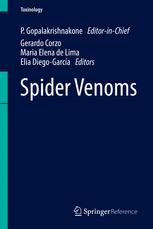

Most ebook files are in PDF format, so you can easily read them using various software such as Foxit Reader or directly on the Google Chrome browser.
Some ebook files are released by publishers in other formats such as .awz, .mobi, .epub, .fb2, etc. You may need to install specific software to read these formats on mobile/PC, such as Calibre.
Please read the tutorial at this link: https://ebookbell.com/faq
We offer FREE conversion to the popular formats you request; however, this may take some time. Therefore, right after payment, please email us, and we will try to provide the service as quickly as possible.
For some exceptional file formats or broken links (if any), please refrain from opening any disputes. Instead, email us first, and we will try to assist within a maximum of 6 hours.
EbookBell Team

4.0
56 reviewsThis volume provides an overview of the biochemical characterization, structure-function studies, proteomics, bioinformatics, molecular biology, transcriptomics and genomics of various spider species. The book also covers our current knowledge of venom components, toxins and their modes of action. The first section of Spider Venom includes contributions regarding the wide diversity of spider venom components and depicts some of their biological effects (antimicrobial, ion channel modulators, insecticides, this includes peptide and non-peptide toxins), and emphasizes spiders of public health importance. The second section covers transcriptomes, proteomes (and peptidomics), bioinformatics and molecular dynamics. The last section describes antimicrobial, insecticidal toxins, envenomation and the medical potential of spider venoms.
Spider venoms are a great and extensive source of bioactive compounds, and as such form a boundless and bountiful area awaiting discovery. It is by virtue of dedicated scientists that new toxins are discovered and that new insights arise, leading the way towards the investigation of their pharmacological effects, and hopefully, as a consequence, arriving at the discovery of venom components as new drug candidates.